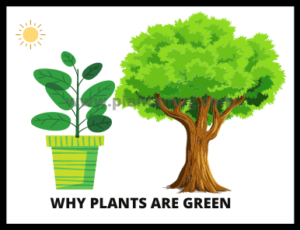Are you want to know why plants are green?
If you ask anyone what is the colour of plants from kid to a mature person everyone answer you that the colour of the plant is green. But when you ask them why plants are green, very few of them answer it.
Before you know the insights on why plants are green, firstly get some basic idea about plants.
Plants basically divided into 4 main parts roots, stem, leaves & flowers. Every part of the plants is responsible for daily function and activities but the reason why plants are green is mostly related to the leaves section of the plant.
Why Plants Are Green?
The plants are green because of the chlorophyll, which is present in the stomata of leaves.
Chlorophyll is a colour pigment or a molecule that absorbs certain colors of light and this absorb light really plays a vital role in the process of photosynthesis.
Photosynthesis is a process in which plants can make their own food (glucose) in the presence of sunlight, carbon dioxide, and water. The term photosynthesis simply means is “ building with light”.
Chlorophyll generally absorbs the red and blue wavelength of light and reflect green colour, that’s why plants look green in colour.
The chlorophyll help absorb the light from the sunlight and store this light energy into chemical energy for there metabolic and catabolic work.
Why are green plants called producers:
Green plants are called primary producers because they make their own food, they don’t depend on others for there food. They play a very important role in the food chain.
Green Plants are primary sources of the food chain, small to big species directly or indirectly depend on your plants for their food.











